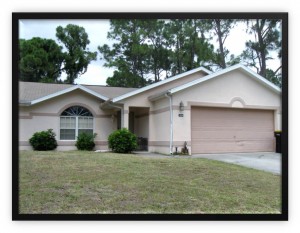 So you’re pretty sure you found your new home, but it needs a little work. You can see some of the obvious repairs and you’ve got a list of upgrades you’d like to add. You think you can save some money going this route, but how much is your DIY house really going to cost you? Here are five steps to aid in making an informed decision about how money-wise a fixer-upper is for you and your family.
So you’re pretty sure you found your new home, but it needs a little work. You can see some of the obvious repairs and you’ve got a list of upgrades you’d like to add. You think you can save some money going this route, but how much is your DIY house really going to cost you? Here are five steps to aid in making an informed decision about how money-wise a fixer-upper is for you and your family.
1. Hire a home inspector. Hiring a home inspector will give you vital information that can help you understand a realistic budget. When your contract for sale and purchase of the home has been accepted by the seller, it’s time to schedule the inspection. As a result of the inspection, your home inspector will share key information about the condition of the home’s components and necessary repairs, including plumbing, electric, the heating and cooling systems, appliances, etc. Yet, there’s more you’ll to consider. Note: Usually the seller will make water, electric and gas utilities available for the inspection (but don’t wait till the last minute: activating deactivated utilities can take several days) and we can typically schedule an inspection with a few days’ notice. It will help to have the seller’s disclosure statement before the inspection as it identifies known problems, defects and other facts about the property.
2. Determine the cost of repairs. Some home inspectors may give you ballpark pricing for repairs that are easy to assess. Critical big-ticket replacements, a new roof or water supply piping for instance, require further evaluation and a firm bid from a licensed contractor. You should get these prices before the end of your inspection period.
3. Evaluate the cost of desired upgrades. These won’t be in the inspector’s report, but should include improvements to bring everything up to your standards. Some of these might be new carpeting, interior/exterior paint, new countertops, bath renovation, fresh landscaping. You’ll be surprised how quickly these add up to $10,000-20,000 or more
4. Quantify the DIY. How much the home repairs and upgrades can you really do on your own? Be realistic with the patience, time and talent you have to complete the work yourself, and plan for contingencies.
5. Calculate. Start crunching the numbers to get an accurate idea of what your total spend will be including the actual property, the repairs, and the improvements. You may find that, when you add up all the costs to make a fixer-upper into the home you really want, that a move-in ready house is a better deal for you.
Buy Your Side Home Inspections is a reliable, licensed Osceola County home inspector and has been for years. Make a wise decision today in your quest to be a Osceola County home buyer… called Tommy Joynes at 407-780-0911!

May 15, 2014
I used a home inspector when I bought my first home and I’m glad I did. I bought my home through Taylor Morrison and they suggested that I have a home inspector check everything out before I moved in. I think that home inspectors can save a new buyer a lot of hassle down the road.